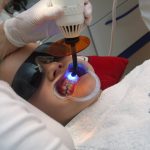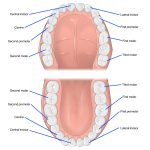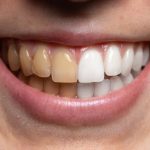Choosing the Right Anesthesia for Wisdom Teeth Removal: A Comprehensive Guide
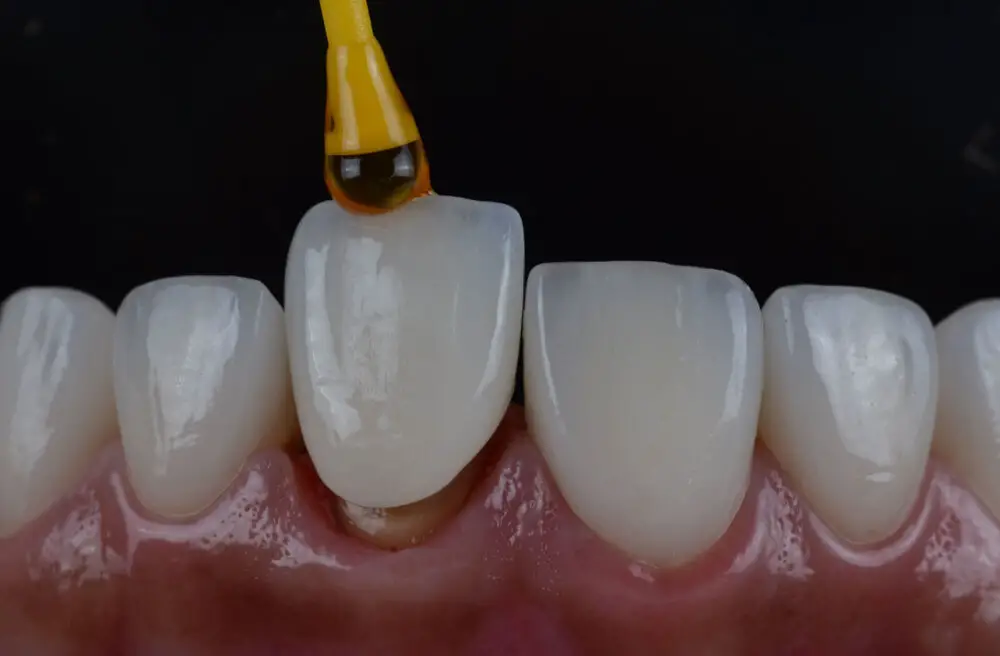
The removal of wisdom teeth is a common dental procedure that many individuals undergo. However, the choice of anesthesia used during the procedure can vary and is an important decision that should be made carefully. Anesthesia is used to minimize pain and discomfort during the dental procedure, but choosing the right type of anesthesia can also affect the recovery process. This comprehensive guide will provide information on the different types of anesthesia available for wisdom teeth removal, including local anesthesia, nitrous oxide, oral sedation, and general anesthesia. The guide will also discuss the potential risks and benefits of each anesthesia option, as well as factors to consider when choosing the right anesthesia for your individual needs. By understanding the different anesthesia options available, patients can make informed decisions and feel more confident and comfortable during their wisdom teeth removal procedure.
Wisdom teeth are the third molars that appear in the back of the mouth during early adulthood. Due to the lack of space, these teeth can cause various dental problems such as overcrowding, infection, and misalignment. Wisdom teeth removal is a common dental procedure that involves the extraction of these teeth. Anesthesia is an essential component of wisdom teeth removal as it helps to alleviate pain and discomfort during the procedure. There are different types of anesthesia available for wisdom teeth removal, and the choice of anesthesia depends on the complexity of the procedure, the patient’s medical history, and their anxiety levels. By choosing the right anesthesia, patients can undergo wisdom teeth removal with minimal pain and discomfort, making the procedure safer and more comfortable.
Types of Anesthesia

When it comes to wisdom teeth removal, there are three main types of anesthesia that can be used: local anesthesia, nitrous oxide sedation, and general anesthesia. Local anesthesia is the most common type of anesthesia used for this procedure. It involves the injection of a numbing agent into the gums around the area where the tooth or teeth will be extracted. This type of anesthesia allows the patient to remain conscious and aware during the procedure, but they will not feel any pain in the area being worked on. Local anesthesia is usually sufficient for simple wisdom teeth extractions that do not involve any complications or require the removal of bone. Nitrous oxide sedation, also known as laughing gas, is a type of anesthesia that is inhaled through a mask placed over the patient’s nose. This type of anesthesia helps patients to relax during the procedure and reduces anxiety. Nitrous oxide sedation does not put the patient to sleep, but it can cause them to feel drowsy and unaware of their surroundings. Patients who receive nitrous oxide sedation will still require local anesthesia to numb the area being worked on. General anesthesia is the most intensive type of anesthesia and is usually only used for complex wisdom teeth extractions or for patients who have a fear of dental procedures. It involves administering medication that puts the patient to sleep and renders them unconscious during the procedure. General anesthesia is typically administered through an IV, and patients will require a longer recovery time compared to other types of anesthesia.
Local anesthesia is a type of anesthesia that numbs a specific area of the body, allowing the patient to remain awake and alert during the procedure. It works by blocking the nerve signals that transmit pain to the brain, resulting in a pain-free experience. Local anesthesia has several advantages, including a quick onset, a low risk of complications, and a shorter recovery time compared to other types of anesthesia, such as general anesthesia. However, local anesthesia may not be suitable for all procedures, and some patients may experience side effects such as swelling, bruising, or allergic reactions. Additionally, local anesthesia may not completely eliminate pain or discomfort during the procedure, and patients may require additional pain management measures.
IV sedation is a type of anesthesia that is administered intravenously to help patients feel relaxed and comfortable during surgical procedures. This type of anesthesia works by delivering medication directly into the bloodstream to induce a state of deep relaxation, allowing the patient to remain conscious but unaware of the procedure. The advantages of IV sedation include that it is highly effective, works quickly, and can be adjusted to meet the patient’s needs. Additionally, it can help to reduce anxiety and discomfort during the procedure, making it an ideal option for patients who are nervous about undergoing surgery. However, one disadvantage of IV sedation is that it can make patients groggy and disoriented for several hours after the procedure. Additionally, it may not be suitable for patients with certain medical conditions or for those who are allergic to certain medications.
General anesthesia is a medical state of unconsciousness induced by a combination of intravenous medications and inhaled gases, which are delivered by an anesthesiologist through a breathing mask or tube. The drugs used in general anesthesia act on the central nervous system to suppress pain sensation, muscle reflexes, consciousness, and memory formation. This allows the patient to undergo complex surgical procedures, such as wisdom teeth removal, without feeling any discomfort or awareness. The advantages of general anesthesia include fast onset, complete sedation, and precise control of the depth and duration of anesthesia. However, general anesthesia also has some disadvantages, such as the risk of respiratory depression, nausea, vomiting, sore throat, confusion, and allergic reactions. Therefore, the decision to use general anesthesia for wisdom teeth removal should be based on the patient’s medical history, age, anxiety level, and the complexity of the procedure.
Factors to Consider When Choosing Anesthesia
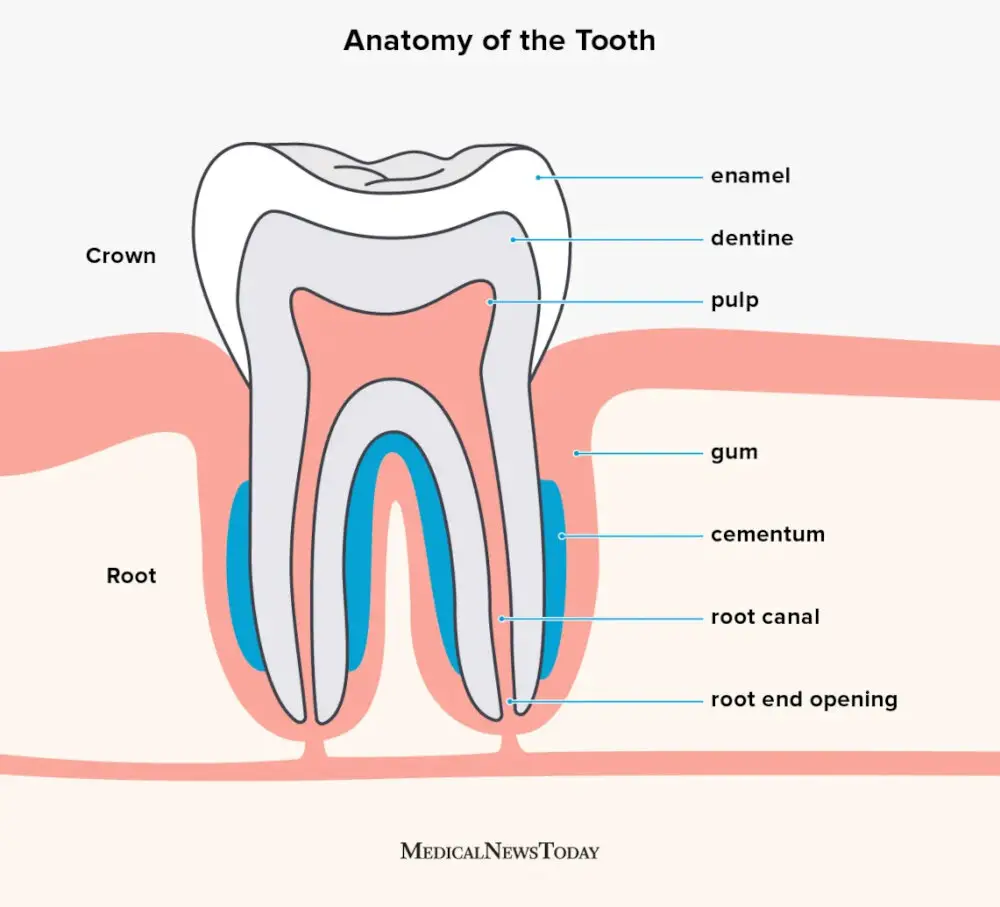
When it comes to wisdom teeth removal, choosing the right anesthesia is crucial to ensure a safe and comfortable experience. There are several factors to consider when deciding which anesthesia method to use. The first factor is the patient’s medical history and current health status. Patients with certain medical conditions, such as heart or lung problems, may not be able to tolerate certain types of anesthesia. It is important for the dentist or oral surgeon to review the patient’s medical history and discuss any potential risks or complications with anesthesia. Another important factor to consider is the complexity of the procedure and the patient’s level of anxiety. For more complex procedures or patients who are particularly anxious, general anesthesia may be the best option to ensure the patient remains comfortable and relaxed throughout the procedure. However, for less complex procedures or patients who are not as anxious, local anesthesia may be sufficient and less risky. Ultimately, the decision of which anesthesia method to use should be made by the dentist or oral surgeon in consultation with the patient, taking into account all relevant factors and the patient’s preferences.
Age plays a crucial role in selecting the appropriate anesthesia for wisdom teeth removal. Younger patients, such as teenagers or those in their early twenties, generally opt for general anesthesia as it puts them to sleep throughout the procedure, reducing anxiety and discomfort. On the other hand, older patients, particularly those over 60, may have underlying health conditions that make general anesthesia risky, and therefore, local anesthesia may be a safer option. Additionally, older patients may take longer to recover from general anesthesia, and the postoperative effects may be more pronounced. Therefore, age is an essential factor that must be considered while choosing the right anesthesia for wisdom teeth removal to ensure the patient’s safety and comfort.
Medical history plays a crucial role in determining the type of anesthesia to be used during wisdom teeth removal. A thorough review of the patient’s medical history is essential to assess any potential risks or complications associated with anesthesia administration. Factors such as allergies, previous adverse reactions to anesthesia, and chronic medical conditions like heart disease, diabetes, and asthma can significantly influence the choice of anesthesia. Patients with a history of substance abuse or addiction to alcohol or drugs may also require special considerations. The anesthesiologist needs to take into account the individual patient’s medical history to determine the safest and most effective anesthesia approach for wisdom teeth removal. With careful consideration and attention to detail, anesthesia can be safely administered, and the patient can undergo surgery with minimal discomfort and risk.
Anxiety can significantly impact the anesthesia choice for wisdom teeth removal. Patients who suffer from anxiety may be at risk of experiencing severe stress and discomfort during the procedure, which may require the use of sedation or general anesthesia. However, choosing the right anesthesia is crucial to ensure the safety and well-being of the patient. While sedation may be an effective option for patients with mild to moderate anxiety, general anesthesia may be necessary for those with severe anxiety or special needs. The anesthesiologist will take into account the patient’s medical history, anxiety level, and other factors to determine the appropriate anesthesia type and dosage. Therefore, it is important for patients to inform their dentist or oral surgeon about any anxiety or other medical conditions they may have before the procedure.
The complexity of the procedure plays a crucial role in determining the anesthesia choice for wisdom teeth removal. The more complex the procedure, the more likely it is that general anesthesia will be required to ensure patient comfort and safety. Complex procedures may involve multiple extractions, impaction, or require bone removal, which can be uncomfortable or painful without proper anesthesia. In contrast, less complex procedures may only require local anesthesia or conscious sedation. Anesthesia choice must be based on the individual patient’s needs and the complexity of the procedure to ensure the safest and most comfortable experience possible.
Cost is an important factor to consider when choosing the right anesthesia for wisdom teeth removal. Depending on the type of anesthesia chosen, the cost can vary significantly. Local anesthesia is the most affordable option, while general anesthesia is the most expensive. However, cost should not be the only consideration when making this decision. It is important to weigh the cost against other factors such as patient comfort, safety, and the complexity of the procedure. In some cases, the higher cost of general anesthesia may be worth it for patients who are anxious or have a low pain tolerance. Ultimately, the decision on which anesthesia to use should be made in consultation with the patient’s dentist or oral surgeon, taking into account the patient’s individual needs and preferences.
Preparing for Anesthesia

Preparing for anesthesia is an important step in getting ready for any surgical procedure, including wisdom teeth removal. There are a few things that you can do beforehand to ensure that you are ready for the anesthesia and that the procedure goes as smoothly as possible. First, it is important to follow any instructions given to you by your dentist or oral surgeon regarding eating and drinking before the procedure. In most cases, you will need to fast for a certain period of time before the surgery to reduce the risk of complications during anesthesia. It is also important to let your dentist or oral surgeon know about any medical conditions you have or medications you are taking, as these can affect the type of anesthesia that is used and how it is administered. Another important aspect of preparing for anesthesia is understanding the risks and potential side effects. Anesthesia is generally safe, but there are some risks associated with it, such as allergic reactions, breathing problems, and nausea or vomiting. Your dentist or oral surgeon will explain these risks to you and provide you with information on how to minimize them. They will also explain the different types of anesthesia that are available for wisdom teeth removal and how each one works. By understanding the risks and benefits of anesthesia and preparing properly beforehand, you can help ensure that your wisdom teeth removal procedure goes as smoothly as possible.
Before undergoing the wisdom teeth removal procedure, there are certain things that you should expect. Firstly, your dentist or oral surgeon will conduct a thorough examination of your teeth and take X-rays to determine the position and shape of your wisdom teeth. Based on this assessment, they will then decide on the type of anesthesia that is best suited for your needs. You will also be advised to avoid eating or drinking anything for several hours before the procedure, and to arrange for someone to drive you home afterwards. Additionally, you may experience some discomfort and swelling after the procedure, which can be managed with pain medication and ice packs. By being aware of these expectations, you can prepare yourself both physically and mentally for the procedure and ensure a smooth and successful recovery.
Fasting guidelines are crucial when preparing for wisdom teeth removal surgery. Patients should avoid eating anything for at least eight hours before the procedure, and they should only drink clear liquids up to two hours before the surgery. It’s essential to follow these guidelines to prevent complications during the procedure, such as aspiration of food or liquids into the lungs while under anesthesia. Patients should also inform their dentist or oral surgeon of any medications they are taking, as some may interfere with the anesthesia. By following the fasting guidelines and communicating openly with their dental team, patients can ensure a safe and successful wisdom teeth removal surgery.
When it comes to preparing for a wisdom teeth removal appointment, what to wear may not be at the forefront of your mind. However, it is important to consider clothing that is comfortable and easy to move in. Loose-fitting clothing is ideal as it allows for freedom of movement and can also accommodate any swelling that may occur after the procedure. Avoid tight-fitting clothing or anything that may constrict your movement. Additionally, it may be a good idea to bring a jacket or sweater to the appointment as the dental office may be cool. Overall, selecting comfortable and practical clothing will help ensure a smoother and more comfortable experience during and after the wisdom teeth removal procedure.
Before undergoing any medical procedure, it is important to provide your doctor with all necessary information about your medical history, including any allergies, current medications, and previous surgeries. This is especially crucial when undergoing wisdom teeth removal with anesthesia, as certain medications and medical conditions can affect the safety and effectiveness of anesthesia. Inform your doctor if you have any heart or lung conditions, sleep apnea, or a history of drug or alcohol abuse. Additionally, make sure to disclose any herbal supplements or over-the-counter medications you are taking, as these can also interact with anesthesia. By providing your doctor with a comprehensive medical history, you can help ensure a safe and successful procedure.
Aftercare and Recovery

After wisdom teeth removal, proper aftercare and recovery are crucial to ensure a smooth healing process. This includes following the dentist or oral surgeon’s instructions carefully, such as avoiding solid foods and smoking for a few days after the procedure, using ice packs to reduce swelling, and taking prescribed pain medication as directed. It is also important to keep the surgical site clean by gently rinsing with salt water and avoiding vigorous brushing or flossing around the area. Patients should also rest for at least 24 hours after the procedure and avoid strenuous physical activity for a few days. Overall, following these aftercare steps can help minimize discomfort, reduce the risk of infection, and promote quicker healing. Recovery time after wisdom teeth removal can vary depending on the individual and the complexity of the procedure. Generally, patients can expect some discomfort and swelling for the first few days, which can be managed with pain medication and ice packs. It is normal to experience some bleeding and oozing from the surgical site for the first 24 hours, but this should gradually subside. Most patients can return to their normal daily activities within a week, but it may take up to two weeks for the gums to fully heal. During this time, it is important to continue following aftercare instructions and attending any follow-up appointments with the dentist or oral surgeon. By taking proper care of the surgical site and giving the body time to heal, patients can ensure the best possible outcome following wisdom teeth removal.
Recovery time after wisdom teeth removal surgery varies depending on the type of anesthesia used. Local anesthesia, which numbs only the area around the teeth, usually has a shorter recovery time than general anesthesia, which puts the patient to sleep. With local anesthesia, patients can usually resume normal activities within a few hours of the procedure. With general anesthesia, patients may experience grogginess and dizziness for several hours after the procedure and may require a longer recovery period before resuming normal activities. Sedation anesthesia, which relaxes the patient but does not put them completely to sleep, falls somewhere in between in terms of recovery time. It is important to discuss the anesthesia options with your dentist or oral surgeon to determine which type is best for you based on your individual needs and medical history.
After undergoing wisdom teeth removal surgery, it is crucial to take care of the surgical site to prevent infections and promote proper healing. The first step is to control bleeding by biting down on the gauze placed over the surgical site for at least 30 minutes. It is also essential to avoid touching the surgical site or rinsing the mouth for the first 24 hours after surgery. Afterward, gentle rinsing with saltwater or an antiseptic mouthwash can be done to keep the area clean. Avoid smoking, drinking alcohol, and using straws, as they can dislodge the blood clot and delay healing. It is important to follow the post-operative care instructions given by the dentist or oral surgeon closely to ensure a smooth recovery and reduce the risk of complications.
After the wisdom teeth removal procedure, it is crucial to follow a proper diet to ensure a speedy recovery. It is recommended to opt for soft, easy-to-chew foods that won’t irritate the healing gums. Foods like yogurt, scrambled eggs, oatmeal, mashed potatoes, and smoothies are excellent options. Avoid consuming spicy, crunchy, and acidic foods that can cause discomfort and pain. Additionally, it is essential to stay hydrated by drinking plenty of fluids like water, coconut water, and natural fruit juices. Avoid drinking alcohol, caffeinated and carbonated drinks as they can cause dehydration and affect the healing process. A balanced and nutritious diet is crucial to promote healing and reduce the risk of infection after the wisdom teeth removal procedure.
When it comes to pain management options for wisdom teeth removal, there are several choices available. One popular option is local anesthesia, which numbs the area around the teeth being extracted. Another option is nitrous oxide, commonly known as laughing gas, which helps to relax the patient and make the procedure more comfortable. For those who require a deeper level of sedation, intravenous (IV) sedation may be used. This type of sedation allows the patient to remain conscious but relaxed throughout the procedure. Finally, general anesthesia may be used in cases where the patient needs to be completely unconscious during the procedure. It is important to discuss these options with your dentist or oral surgeon and choose the best option for your individual needs.
Anesthesia plays a pivotal role in wisdom teeth removal. It is imperative to choose the right anesthesia to ensure that the procedure is safe, painless and successful. Wisdom teeth removal is a complex oral surgery that requires a high level of precision, skill and knowledge. Anesthesia helps to control pain, reduce anxiety and prevent discomfort during the procedure. It also helps the oral surgeon to perform the surgery smoothly and efficiently. The right anesthesia can help to minimize the risks and complications associated with wisdom teeth removal. Therefore, it is important to consult with a qualified oral surgeon and consider all the factors before choosing the right anesthesia for wisdom teeth removal.
There are several types of anesthesia available for wisdom teeth removal, each with its benefits and risks. Local anesthesia is the most common and involves the injection of a numbing agent into the surrounding tissue. Conscious sedation, also known as twilight anesthesia, is a combination of medications that make the patient feel drowsy and relaxed while remaining conscious. General anesthesia is the most profound form of anesthesia and involves the administration of medications that render the patient completely unconscious. Regional anesthesia targets specific nerves or regions of the body and blocks the sensation of pain. Ultimately, the type of anesthesia chosen for wisdom teeth removal will depend on the patient’s medical history, personal preferences, and the complexity of the procedure.
When it comes to wisdom teeth removal, choosing the right anesthesia is crucial to ensure a comfortable and safe experience for the patient. There are several factors to consider when making this decision, including the patient’s medical history, age, anxiety level, and the complexity of the procedure. Patients with certain medical conditions, such as heart disease or respiratory problems, may require a different type of anesthesia than those without these conditions. Age can also be a factor, as younger patients may benefit from lighter anesthesia options. Additionally, patients with high anxiety levels may require stronger sedation to help them relax during the procedure. Finally, the complexity of the procedure may also impact the type of anesthesia chosen, as more invasive surgeries may require deeper levels of sedation. Ultimately, the decision on which anesthesia to use should be made in consultation with the patient’s dentist or oral surgeon, taking into account all relevant factors to ensure the best possible outcome.
Preprocedure preparation guidelines are crucial to ensure the safety and success of wisdom teeth removal surgeries. Patients should inform their dentist or oral surgeon of any medical conditions, allergies, and medications they are taking before the procedure. It is also essential to follow fasting instructions, which typically require patients to avoid food and drink for several hours before the surgery. Patients should arrange for someone to drive them home after the procedure and rest for the remainder of the day. Proper preoperative preparation can help minimize the risks associated with anesthesia and ensure a smooth and comfortable procedure.
After undergoing wisdom teeth removal, postprocedure aftercare tips are crucial for a speedy and successful recovery. The first 24 hours are critical, and patients should avoid smoking, using straws, and consuming hot or hard foods. Instead, stick to a soft diet and use a cold compress to reduce swelling. Pain management options include over-the-counter medications like ibuprofen and acetaminophen, as well as prescription painkillers prescribed by the dentist. It’s essential to follow the dosage instructions carefully and not to exceed the recommended amount. Additionally, keeping the mouth clean with gentle rinsing and brushing will help prevent infections and promote healing.
Conclusion

In conclusion, choosing the right anesthesia for wisdom teeth removal is a crucial decision that should not be taken lightly. With the variety of options available, it is important to weigh the benefits and risks of each and select the one that best suits your individual needs and preferences. Whether it be local anesthesia, nitrous oxide, oral sedation, or IV sedation, consulting with your dentist or oral surgeon and discussing your concerns and medical history can help ensure a safe and comfortable procedure. Remember, the goal is to not only remove your wisdom teeth, but also to minimize pain and discomfort during and after the procedure. So, take the time to research and choose the right anesthesia option for you.





